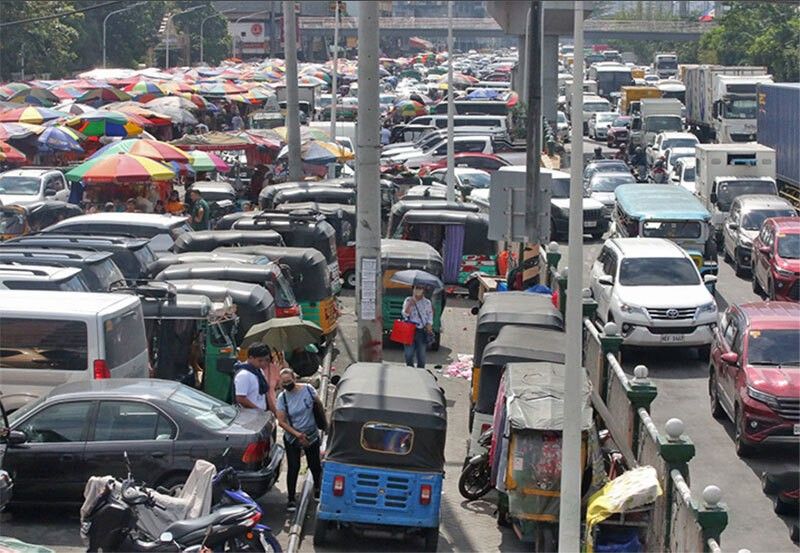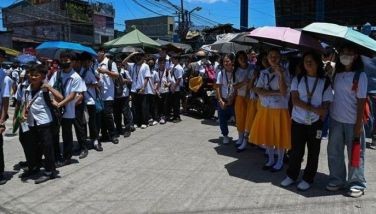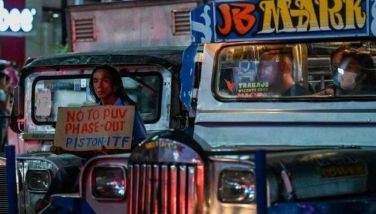Traffic index: 25 mins, 30 secs to travel 10 kms in Metro Manila

MANILA, Philippines — Traffic further worsened in Metro Manila in 2023, resulting in an estimated 117 hours – almost five days – lost in traffic congestion last year by every Filipino who had to deal with rush hour every working day.
The 2023 Traffic Index, released by transportation data company TomTom Traffic, found that drivers in Metro Manila spent an average of 25 minutes and 30 seconds to travel 10 kilometers in 2023, the slowest among the 387 metro areas included in the study.
This was up from the average of 24 minutes and 40 seconds it needed for Metro Manila drivers to travel 10 kms. in 2022.
From ranking second in 2022, Metro Manila took the top spot among metro areas in the 2023 index, overtaking Bogota in Colombia, which dropped to fifth (23 minutes and 30 seconds).
Following Metro Manila were Lima in Peru (24 minutes and 20 seconds), Bengaluru in India (23 minutes and 50 seconds) and Sapporo in Japan (23 minutes and 30 seconds).
For comparison, some of the largest metro areas in Southeast Asia – Singapore, Jakarta in Indonesia, Bangkok in Thailand and Kuala Lumpur in Malaysia – clocked less than 20 minutes.
Meanwhile, in terms of traffic in the city center, Manila ranked ninth, same as in 2022. The index said it took an average of 27 minutes and 20 seconds to travel 10 kms. in the busiest parts of the city last year, slower by 20 seconds in 2022.
London in the United Kingdom is still the slowest city in the city center list (37 minutes and 20 seconds), followed by Dublin in Ireland, Toronto in Canada, Milan in Italy, Lima in Peru, Bengaluru and Pune in India and Bucharest in Romania.
TomTom Traffic said the index is based on floating car data, which is collected from various sources that it uses to create traffic services for its clients and customers.
The ranking of metro areas is based on the traffic in the entire region, including the “rural areas in close proximity,” while the city center ranking covers a radius of 5 kms. covering the busiest parts of the city.
Cities were classified as megacities, large and small. Manila is considered a large city.
“In the Traffic Index, we use a representative sample of this data, spanning 551 billion kms., to assess and show how traffic has evolved in cities around the globe throughout 2023,” read the methodology used for the index.
“The travel time in different cities is a result of multiple factors, which can be grouped into a) quasi-static factors (e.g., road infrastructure, such as street categories, capacities, and speed limits) and b) dynamic factors (e.g., traffic congestion and changes in flow),” it added.
According to TomTom Traffic, Dec. 15 was the worst day to travel through Manila in 2023, with an average of 31 minutes and 50 seconds to drive 10 kms. It was the last payday Friday before Christmas.
Based on the report, an average driver in Metro Manila spent 240 hours on the road last year, including 117 hours due to congestion.
It resulted in an average of 1,027 kilograms of carbon dioxide (CO2) emissions per car per year, including 304 kgs. due to congestion.
Ralf-Peter Schäfer, TomTom’s vice president for product management of traffic, travel and routing, stressed the need to think beyond congestion to solve the traffic problem.
“Traffic shouldn’t just be about managing cars or making the situation better for cars, we need more than that,” he said in a Q&A published on the site’s website.
Schäfer cited examples such as the cities of Amsterdam in the Netherlands and Copenhagen in Denmark, which invested in biking and pedestrian infrastructure.
“Amsterdam is famous for bikes, not just because it’s flat and cyclable, but it’s thanks to the excellent cycling infrastructure, which includes segregated cycle lanes, bike parking and a legislative hierarchy that protects the most vulnerable road users,” wrote Matthew Beedham, editor at TomTom Traffic.
“Amsterdam also has a robust public transit network and many pedestrian walkways and pedestrianized zones. All this lightens the load on the roads and helps keep people moving, regardless of their chosen mode of transport,” he added.
According to the index, drivers and commuters in Metro Manila could save about 47 hours and reduce CO2 emissions by 201 kgs. per year if they would be allowed to work from home on Fridays.
It could be as high as 147 hours and 608 kgs. of CO2 emissions if the work from home setup is extended to three days per week (Tuesdays, Wednesdays and Fridays).
The index said the worst day and time to travel in Metro Manila is Friday, from 5 p.m. to 6 p.m., when driving 10 kms. took an average of 35 minutes and 30 seconds.
- Latest
- Trending
































